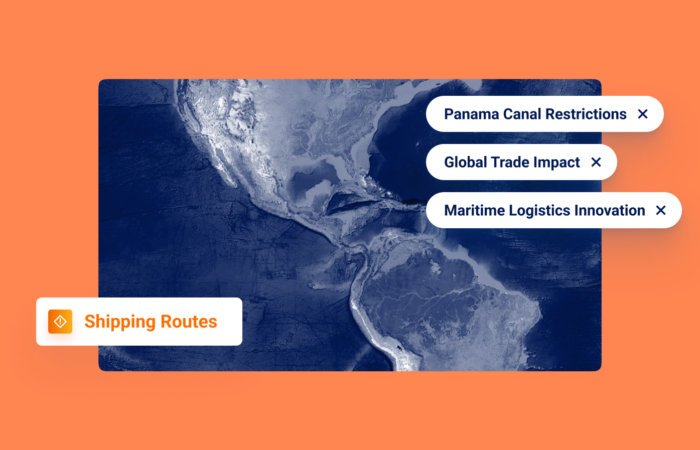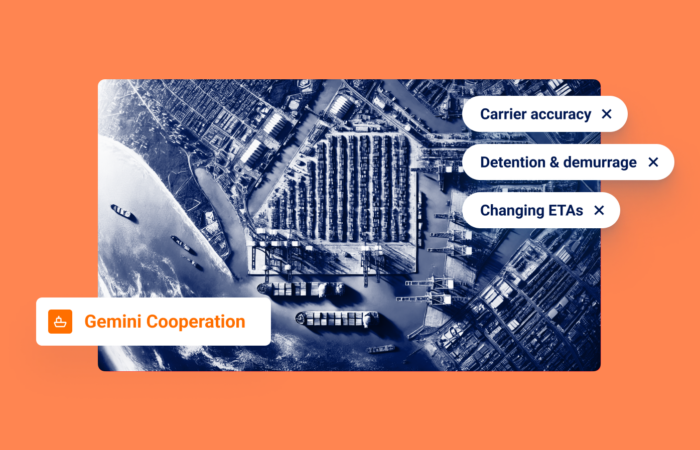Supply chain trends that will matter in 2022

What’s inside?
According to a December Wall Street Journal article, in 2021, the ports of LA and Long Beach handled 21% more import containers between Jan. and Sept. than the same period in 2019. And at the time of the article, there was still a line of nearly 90 ships waiting to unload their cargoes in Southern California.
2021 was marked by supply chains that struggled to keep up with pent-up demand. As a result, businesses and governments are re-evaluating the whole mechanism as they attempt to bring additional capacity into the system as a contingency, thus avoiding shortages of consumer goods, raw materials, and domestic energy. So what can we expect for 2022? Is there room for improvement in this disrupted market?
A shift from reactive to proactive
We will likely see a move away from just-in-time, super-efficient supply chains to a mechanism with more resilience and additional capacity. This will take time to evolve but certainly will require more capacity on the container liner routes, where port congestion has led to bottlenecks and the omission of significant numbers of scheduled port calls. Customers have found their containers off-loaded at ports not on the official schedule, and then subjected to feeder services to get them back to the planned destination. This results in days and weeks of delay brought about by COVID-led supply constraints and a lack of spare capacity, containers, and truck drivers.
The cost of transportation has increased significantly, according to container freight specialists, Xeneta. Their index shows that 2021 rates for Shanghai-Los Angeles ports, for 40′ containers, increased by over 61%. Meanwhile, there was a huge increase of 168% for the Shanghai-North Europe route, which makes it increasingly important to optimize efficiency and monitor information flows. With a proactive approach, freight forwarders can plan amid disruptions. So if there is a predicted delay at a given port of 2 days, they can plan an alternative route that will better meet the needs of their customers.
Customers will always be king
One area of critical importance is to understand where your goods are in the supply chain if they are en-route inside a container. In addition, BCOs and customers need to know about delays and hold-ups.
Freight forwarders need to optimize customer service and operational efficiency by knowing exactly where the goods are at any one time and identifying risks and predicting disruptions. They need to be able to enable their customers to visualize the present location for improved tracking and effective oversight and stay up to date with ETA predictions for every container.
This will be crucial in boosting transparency and should help provide a reality check on progress and delays at a micro-level and lead to a noticeable improvement in cargo monitoring. The result will be a much more accurate estimation of cargo deliveries, which will enhance the quality and service freight forwarders can provide.
Multimodal options
Lastly, looking ahead, offering various modes of transport – air, sea, rail, will be the future of freight forwarding. A tool that can let freight forwarders know the cost, transit time and let customers choose. Customers need that and want that.
If freight forwarders can’t get space on the sea, they want to be able to look at all options and optimize. Customers now have no choice – they depend on freight forwarders. But as a solution provider, multimodal transmit is the future. The supply chain has to be resilient – that’s what customers are looking for. Multimodal solutions will keep the supply chain running. And this will be key to providing what was promised to the end customer.
Conclusion
In response to the tight capacity situation, there has been a surge in containership shipbuilding contracts, with the orders for these ships expected to increase in TEU’s. But the average construction time will be over two years. Given the current supply constraints, it’s likely we will not see an improvement in capacity for some time yet.
The current global supply chain network challenges are here now and for the foreseeable future. Given this, any trends for the industry need to be framed around how technology can help plan supply chain solutions to customers amid disruption. Contact us to learn more about how Windward can help you tackle the supply chain challenges in 2022 and beyond.












